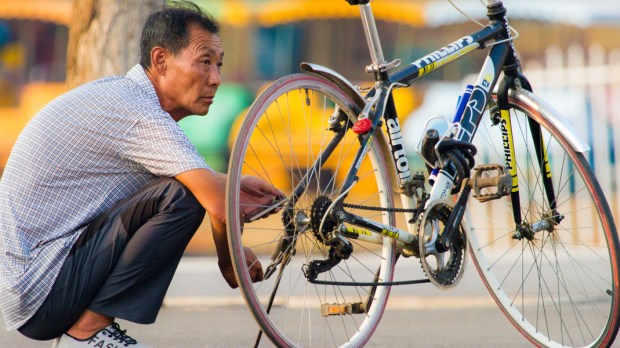The United States is a pretty advanced country — in fact, we’re one of the most envied developed countries on the globe. We have machines that cook our food, wash our dishes and laundry, and even sweep and mop our floors. We have televisions in every room, cell phones for the whole family, and endless entertainment on every street corner. Yet for all of our technological advancements, the loss of certain basic abilities is wreaking havoc on our health and well-being — and one of these things we’ve lost is the ability to squat.
Not those “gym-style” chairless air squats; I’m talking about the deep squat, colloquially known as the “Asian squat,” the squat that human beings have used for millennia for everything from resting our legs to using the bathroom. Most cultures still utilize this ancient position … so why have Westerners seemingly lost the ability to perform such a basic human movement?
The Atlantic recently featured an in-depth journey into the anatomy of the deep squat, and their consensus is that the reason most of us find this type of squatting nearly impossible is because we stop practicing it soon after toddlerhood, so our ankles become rigid and lose their natural flexibility:
Luckily, at least one other person on the internet is obsessed with squats as me, and he knows something about physiology. That would be Bryan Ausinheiler, a physical therapist in California who has penned aseriesof blogposts about the deep squat. “The squat is a great model for a multi-segmental movement pattern,” Ausinheiler rattled off at the beginning of our phone call. Uh, what does that mean? “The squat is a triple flexion movement. You’ve got bending at the hips, knees, and ankle, so you have to fold everything up underneath you.” There’s a lot going on.
But the key factor seems to be ankle flexibility. In the words of our editor Ross Andersen, “squatting makes me feel like I might rupture my Achilles.” A 2009 study in Japan found that men who found it impossible to deep squat had particularly inflexible ankles. This is also in part, Ausinheiler says, why kids have no problem squatting. “I measured my daughter’s ankle flexibility when she was one day old,” says Ausinheiler. “She has 70 degrees of ankle dorsiflexion! Normal in the West is like 30.” So humans are born squatters; some of us lose it when we stop trying.
The good news is that ankle flexibility can be regained. The bad news is that it takes time. I still have trouble maintaining good form when deep squatting … my toes tend to flare outward, and my legs have to be positioned wider than the optimal shoulder-width apart in order to accomplish it at all.
However, I’ve seen a marked improvement since I began attempting to squat at all several years ago. The key is consistent practice — if I go for several days without deep squatting, my ankles tighten up and it takes a few days to regain their flexibility.
I see this in my clients as well — their ankle flexibility will gradually improve as long as they are consistently working on squatting, but when they take even a week off, they lose several degrees of depth to their squat.
The thing about the deep squat is that it isn’t only important for athletic performance — it’s actually the optimal position for bowel movements. If you’ve seen a toddler pop a squat in the middle of the grocery store, you know exactly what I’m talking about. In fact, many experts believe the Western tendency to eschew the squat is to blame for many of our intestinal ailments.
So start practicing that squat! It will come in handy for a lot more than your next CrossFit workout — in fact, you might find that regaining the ability to use this ancient position is the best advancement we modern folks can make.

Read more:
This simple habit done dozens of times a day is ruining your back

